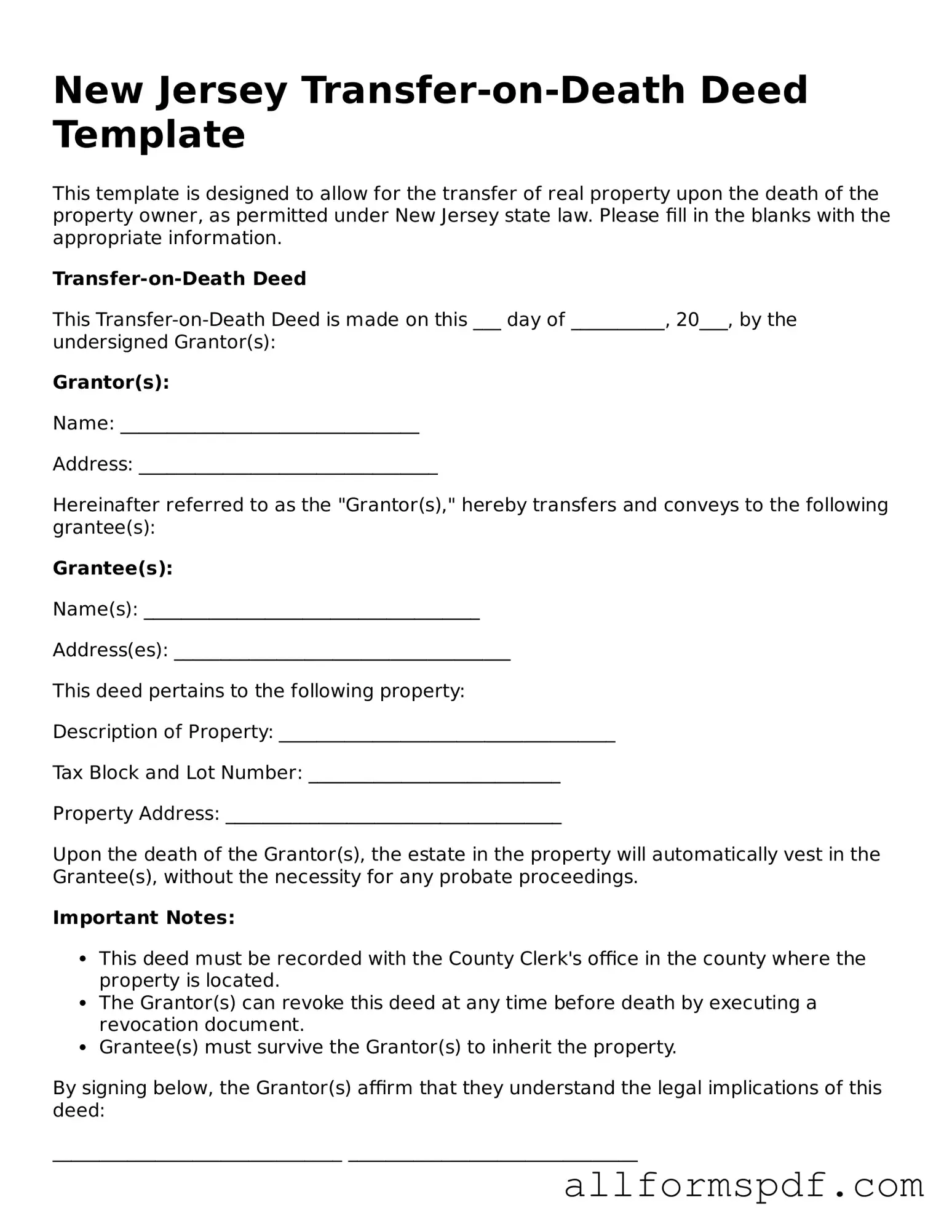Filling out the New Jersey Transfer-on-Death Deed form requires careful attention to detail. One common mistake is failing to include all required information about the property. The form must specify the complete legal description of the property. Omitting this can lead to complications during the transfer process.
Another frequent error is not properly identifying the beneficiary. It is essential to provide the full name and address of the individual who will receive the property upon the owner’s death. Inaccuracies here can result in disputes or delays in the transfer.
Many individuals overlook the need for signatures. The Transfer-on-Death Deed must be signed by the property owner. If this step is neglected, the deed will be considered invalid. Additionally, the form must be notarized to ensure its legal standing.
Some people mistakenly assume that the Transfer-on-Death Deed will automatically avoid probate. While this deed does allow for a transfer outside of probate, it is crucial to understand that certain conditions must be met for it to be effective. Failing to understand these nuances can lead to unexpected outcomes.
Inaccurate or incomplete witness information is another mistake that can undermine the validity of the deed. New Jersey law requires that the deed be witnessed by two individuals. If this requirement is not met, the deed may be challenged in court.
Another common pitfall is neglecting to record the deed with the county clerk’s office. Recording the deed is necessary to make it effective against third parties. Without proper recording, the intended beneficiary may face difficulties in asserting their claim to the property.
People also often forget to update the deed if their circumstances change. For example, if the beneficiary passes away or if the owner wishes to change the beneficiary, a new deed must be executed. Failing to make these updates can lead to unintended consequences.
Finally, many individuals do not seek legal advice when filling out the form. While it is possible to complete the deed without assistance, consulting with a legal professional can help ensure that all requirements are met and that the form is filled out correctly. This can save time and prevent potential issues in the future.
